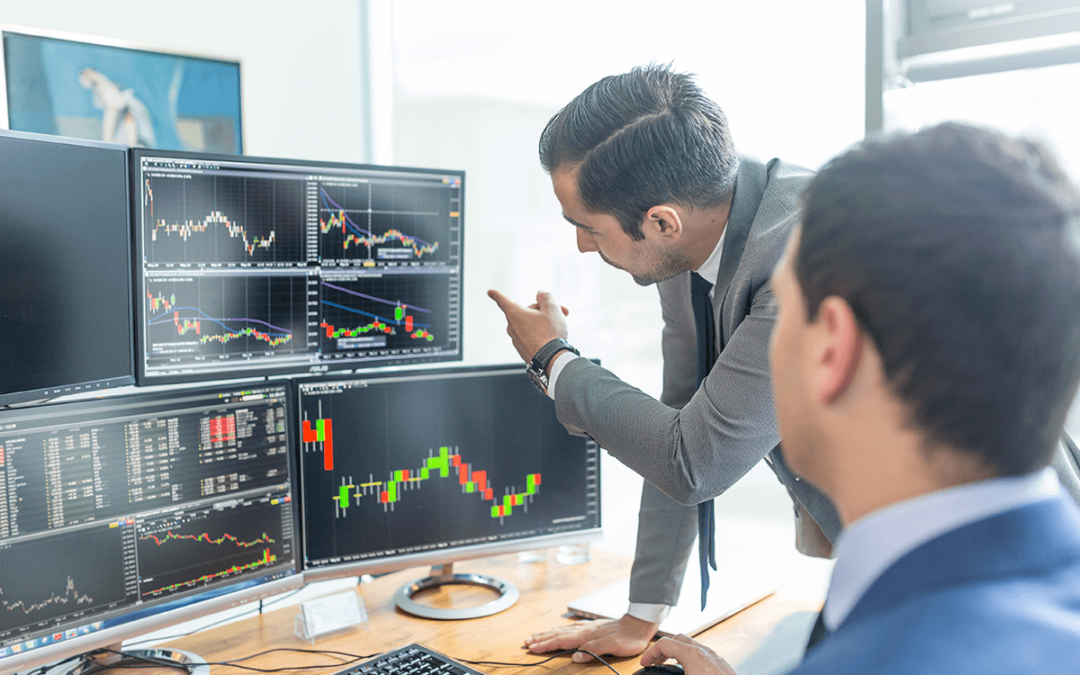Forex trading, also known as foreign exchange trading, is the buying and selling of currencies on the global market. It is a decentralized market where participants trade one currency for another, aiming to profit from fluctuations in exchange rates. Forex trading offers individuals the opportunity to engage in the world’s largest financial market and potentially generate substantial returns. In this comprehensive beginner’s guide, we will explore the fundamentals of Forex trading, from understanding currency pairs to developing trading strategies. Whether you’re completely new to trading or have some experience in other markets, this guide will provide you with the knowledge and tools to embark on your Forex trading journey.
1. What is Forex Trading?
Forex trading involves the buying and selling of currencies with the aim of making a profit from the fluctuations in exchange rates. It is a global market that operates 24 hours a day, five days a week, allowing traders to take advantage of various trading sessions worldwide. Unlike other financial markets, Forex trading does not have a centralized exchange. Instead, it relies on a network of financial institutions, banks, and individual traders connected electronically.
2. How Does Forex Trading Work?
Forex trading is based on the principle of exchanging one currency for another. Currency pairs are traded on the Forex market, with each pair consisting of a base currency and a quote currency. The exchange rate between the two currencies determines the value of the pair. Traders aim to speculate on whether a currency pair’s value will rise or fall and take positions accordingly. Profit is generated by buying a currency pair at a lower price and selling it at a higher price or selling a currency pair at a higher price and buying it back at a lower price.
3. Understanding Currency Pairs
Currency pairs are the foundation of Forex trading. They represent the value of one currency relative to another. The first currency in the pair is the base currency, while the second currency is the quote currency. For example, in the EUR/USD pair, the euro (EUR) is the base currency, and the US dollar (USD) is the quote currency. Understanding currency pairs is essential as it allows traders to analyze market movements and make informed trading decisions.
4. Choosing a Forex Broker
Selecting the right Forex broker is crucial for your trading journey. A Forex broker acts as an intermediary between you and the currency market, providing access to trading platforms, market data, and execution of trades. When choosing a Forex broker, consider factors such as regulation, reputation, trading conditions, customer support, and available trading tools. It’s important to choose a broker that aligns with your trading goals and offers a user-friendly trading environment.
5. Opening a Forex Trading Account
Once you’ve chosen a Forex broker, the next step is to open a trading account. The account opening process may vary between brokers, but it generally involves providing personal information, completing necessary forms, and verifying your identity. You may have the option to choose between different types of accounts, such as a demo account for practice or a live account for real trading. It’s important to carefully read and understand the terms and conditions associated with the trading account.
6. Essential Forex Trading Terminology
Forex trading has its unique terminology that every trader should be familiar with. Here are some essential terms to know:
- Pips: The smallest price increment in a currency pair.
- Lot: A standardized trading unit representing a certain amount of currency.
- Leverage: The ability to control a larger position with a smaller amount of capital.
- Stop Loss: An order placed to limit potential losses by automatically closing a trade at a predetermined price.
- Take Profit: An order placed to secure profits by automatically closing a trade at a target price.
Understanding these terms will help you navigate the Forex market and communicate effectively with other traders.
7. Fundamental and Technical Analysis
Forex traders use two primary methods to analyze the market: fundamental analysis and technical analysis. Fundamental analysis involves studying economic indicators, news events, and geopolitical factors that may influence currency prices. Technical analysis, on the other hand, focuses on historical price data, chart patterns, and technical indicators to identify potential trading opportunities. Both approaches have their strengths, and many traders use a combination of both to make informed trading decisions.
8. Developing a Forex Trading Strategy
A well-defined trading strategy is essential for consistent success in Forex trading. A trading strategy outlines your approach to the market, including entry and exit rules, risk management techniques, and the types of analysis you will use. It’s important to develop a strategy that aligns with your trading style, risk tolerance, and financial goals. Backtesting and demo trading can help you refine and test your strategy before applying it to live trading.
9. Risk Management in Forex Trading
Managing risk is crucial in Forex trading to protect your capital and minimize potential losses. Risk management involves setting appropriate stop-loss levels, determining position sizes based on your risk tolerance, and diversifying your trades. It’s important to avoid risking a significant portion of your capital on a single trade and to use proper leverage to maintain control over your risk exposure. Developing a solid risk management plan is key to long-term success in Forex trading.
10. Emotions and Psychology in Trading
Emotions play a significant role in Forex trading and can influence decision-making. Fear, greed, and impatience can lead to irrational trading decisions and potentially result in losses. It’s important to cultivate discipline, patience, and emotional control when trading. Developing a trading plan, following predefined rules, and practicing mindfulness techniques can help manage emotions and improve trading performance.
11. Choosing the Right Trading Tools
The Forex market offers a wide range of trading tools and resources to assist traders in their analysis and decision-making process. These tools can include economic calendars, charting platforms, news feeds, and expert advisors (EAs) for automated trading. It’s important to choose reliable and user-friendly tools that suit your trading style and objectives. Experimenting with different tools can help you find the ones that enhance your trading experience.
12. Demo Trading and Backtesting
Demo trading allows you to practice Forex trading in a risk-free environment using virtual funds. It provides an opportunity to familiarize yourself with the trading platform, test different strategies, and gain experience without risking real money. Backtesting, on the other hand, involves using historical data to simulate trades and evaluate the performance of your trading strategy. Both demo trading and backtesting are valuable tools for refining your skills and improving your trading results.
13. Live Trading and Real-Time Monitoring
Once you have gained confidence through demo trading and backtesting, you may consider transitioning to live trading with real money. Live trading involves real-time execution of trades in the Forex market. It’s important to closely monitor your trades, manage risk effectively, and stay updated with market conditions and news events that may impact currency prices. Continuous learning and adaptation are key to success in live trading.
14. Continuous Learning and Education
Forex trading is a dynamic and evolving field, and continuous learning is crucial for long-term success. Stay updated with market news, economic indicators, and changes in global financial landscapes. Read books, attend webinars, and follow reputable trading blogs to expand your knowledge and stay ahead of the curve. Additionally, consider joining trading communities or forums where you can interact with fellow traders and share insights and experiences.
Frequently Asked Questions (FAQs)
Q: How much capital do I need to start Forex trading?
The amount of capital required to start Forex trading can vary depending on various factors such as your trading style, risk tolerance, and trading strategy. While some brokers offer the option to start with a small account, it’s generally recommended to have sufficient capital to cover potential losses and withstand market fluctuations.
Q: Can I trade Forex on my mobile phone?
Yes, many Forex brokers offer mobile trading platforms that allow you to trade on your smartphone or tablet. Mobile trading provides flexibility and allows you to monitor and manage your trades on the go. It’s important to choose a broker with a user-friendly mobile app and ensure a stable internet connection for optimal trading experience.
Q: Is Forex trading risky?
Forex trading carries a certain level of risk, as market conditions and exchange rates can fluctuate rapidly. It’s important to understand the risks involved and use proper risk management techniques to protect your capital. With proper education, strategy, and discipline, Forex trading can be a rewarding endeavor.
Q: Can I make a living from Forex trading?
While it is possible to make a living from Forex trading, it requires a significant amount of dedication, education, and experience. Forex trading should be approached with realistic expectations and a long-term perspective. Many successful traders combine Forex trading with other income sources or diversify their investments.
Q: Are there trading hours in Forex?
The Forex market operates 24 hours a day, five days a week. Trading sessions overlap between different regions, providing opportunities for trading throughout the day. It’s important to be aware of market opening and closing times for different currency pairs and adjust your trading strategy accordingly.
Q: What are the costs associated with Forex trading?
Forex trading costs typically include spreads (the difference between the buy and sell price), commissions (charged by some brokers), and swap fees (for positions held overnight). It’s important to consider these costs when calculating potential profits and losses.
Conclusion
Forex trading offers an exciting opportunity for individuals to participate in the global currency market and potentially generate profits. By understanding the fundamentals, developing a trading strategy, and managing risk effectively, you can embark on a successful Forex trading journey. Remember to continuously learn, adapt to market conditions, and cultivate discipline and emotional control. With dedication and practice, you can navigate the Forex market with confidence and achieve your trading goals.



